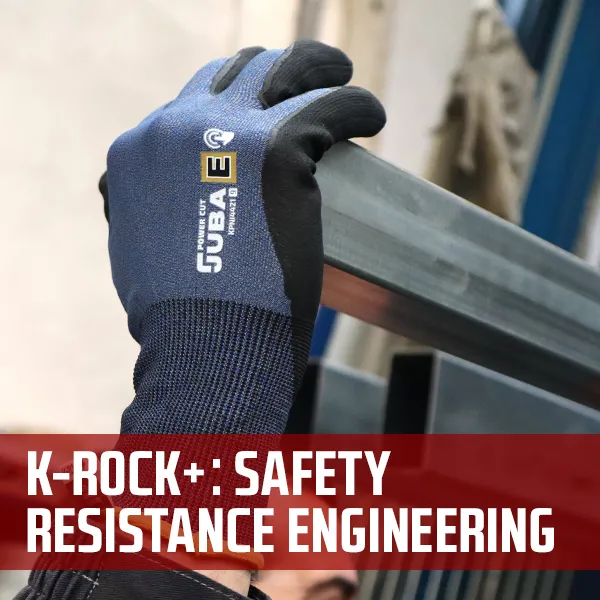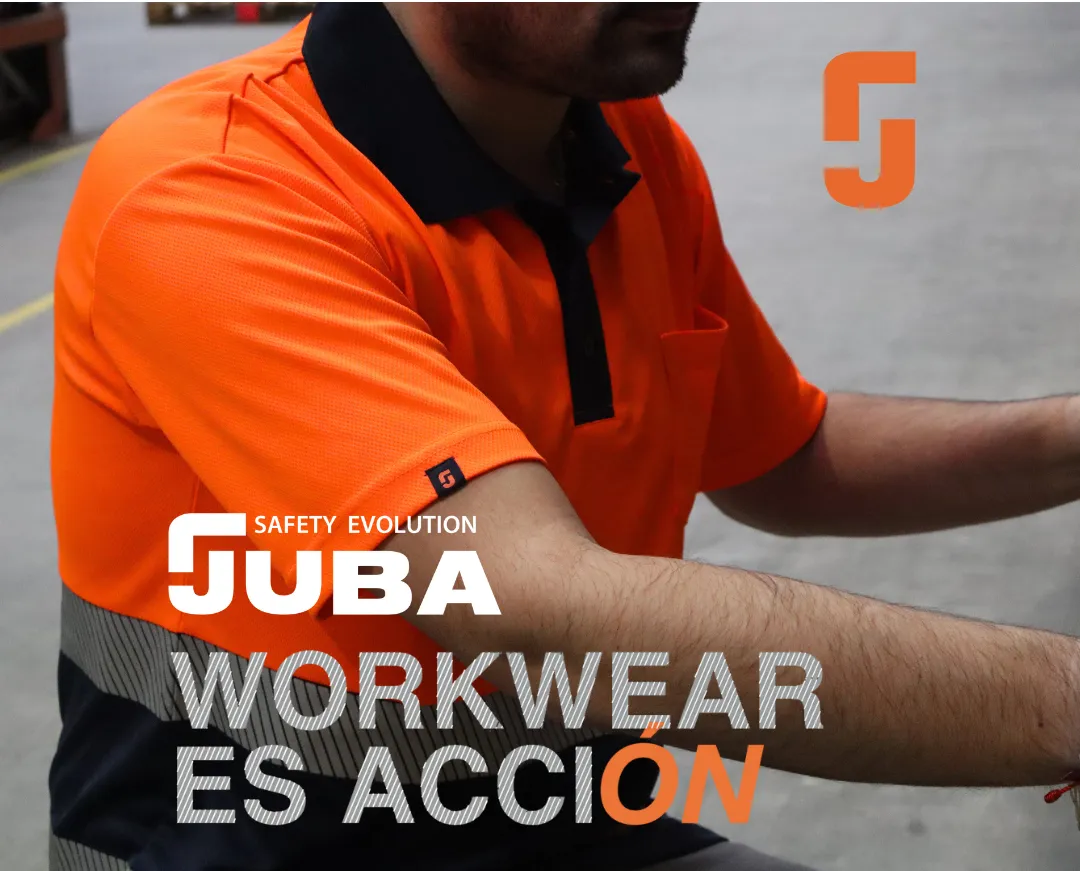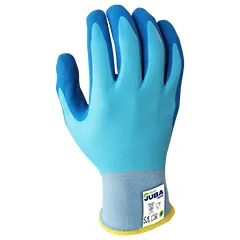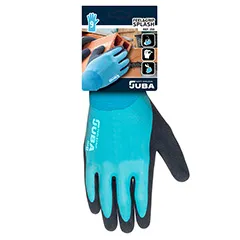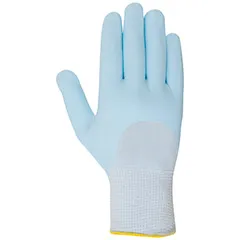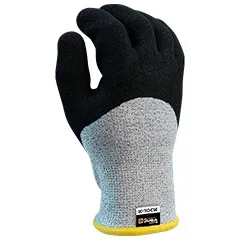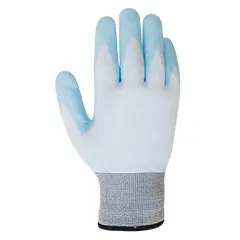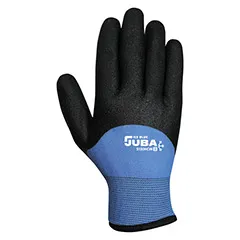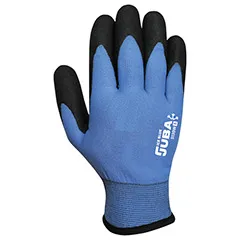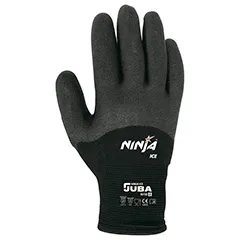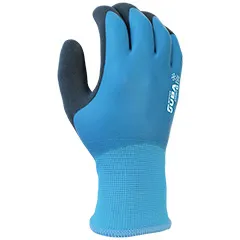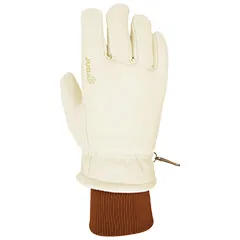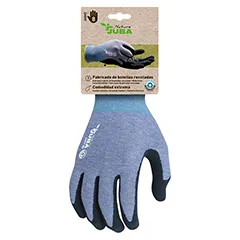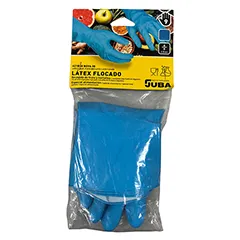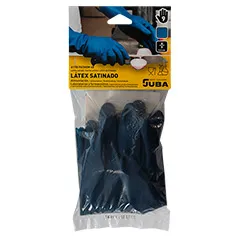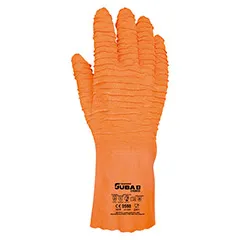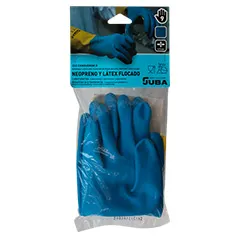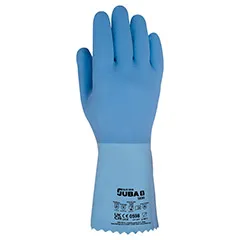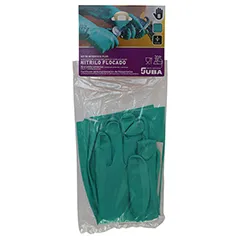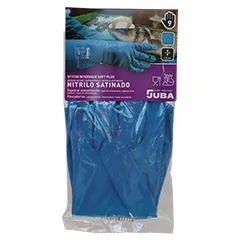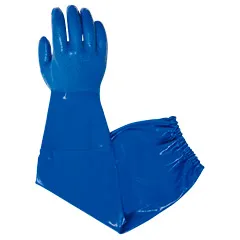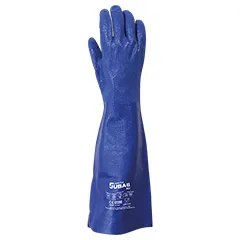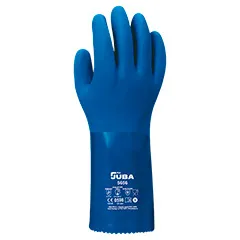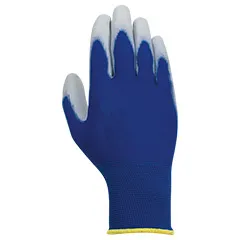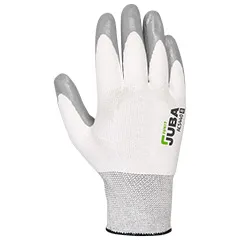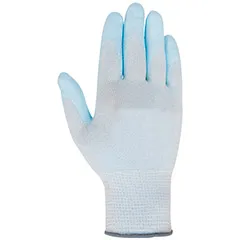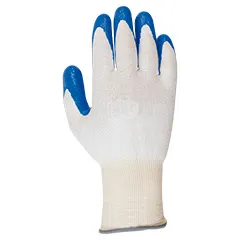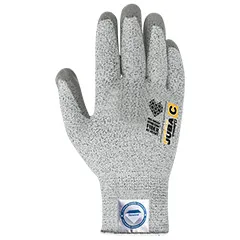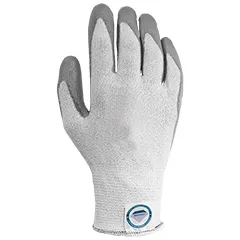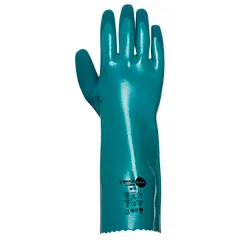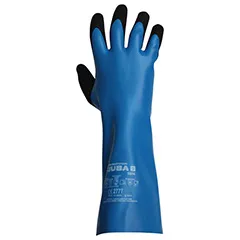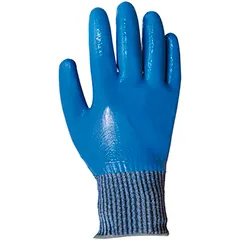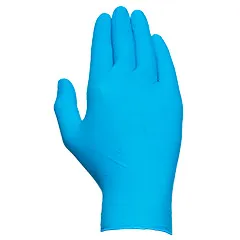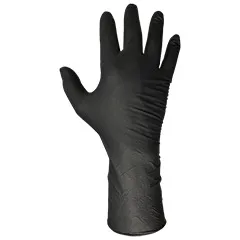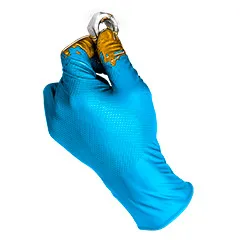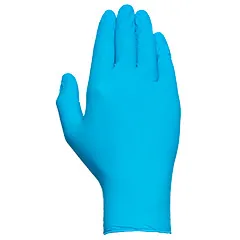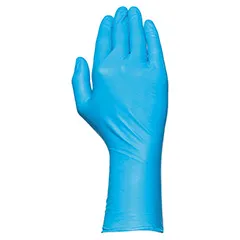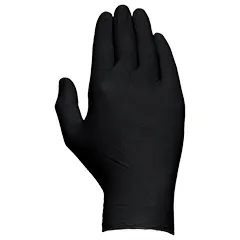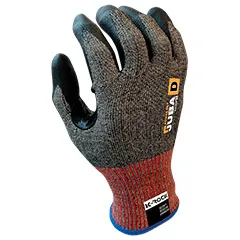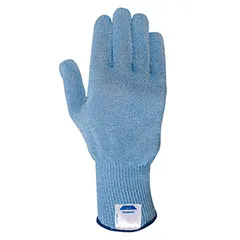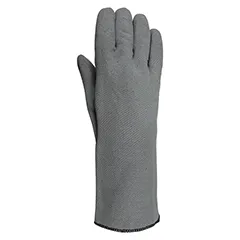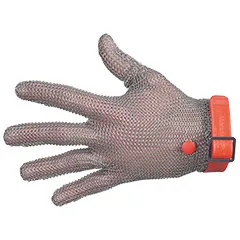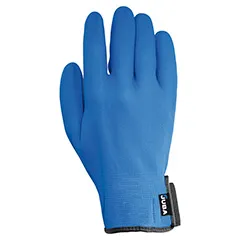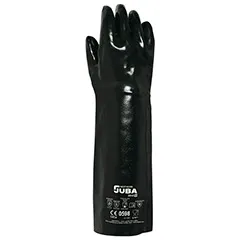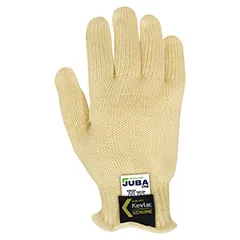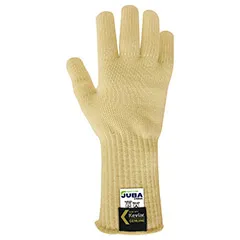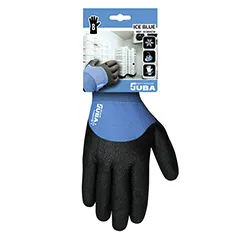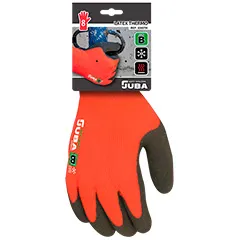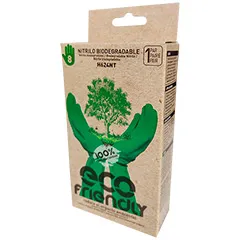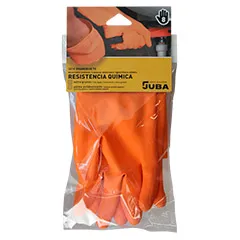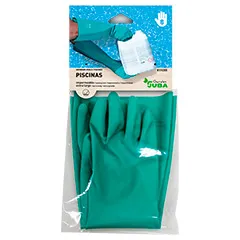K-Rock +
Gloves for the food processing and transformation industry
A worker's hands play an essential role in the manufacture of food, making gloves one of the most important and widely used PPE items in the food industry. From cutting meat to handling prepared food, hands need to be protected from many workplace hazards. However, not all tasks in this sector involve direct handling of food, such as cleaning equipment and maintaining conveyor systems and machinery.
The food industry encompasses a wide range of sub-sectors, from food production to food processing, making it a major contributor to economic activity, as well as an employment-intensive sector.
The most common risks to hands in the food industry are cuts, exposure to chemicals and extreme temperatures, and contact with bacteria and grease.
On the other hand, gloves help to protect food from contamination during handling, as hands can be responsible for spreading a number of common infectious diseases. Micro-organisms present on a person's skin can be harmful and lead to contamination of food at any point in the food preparation process.
Given this disparity of activities, we at Juba understand the complexity of finding and identifying the right glove for each application. That's why we've developed a guide to help you find the most appropriate glove for the processes, tasks and needs covered by each model.
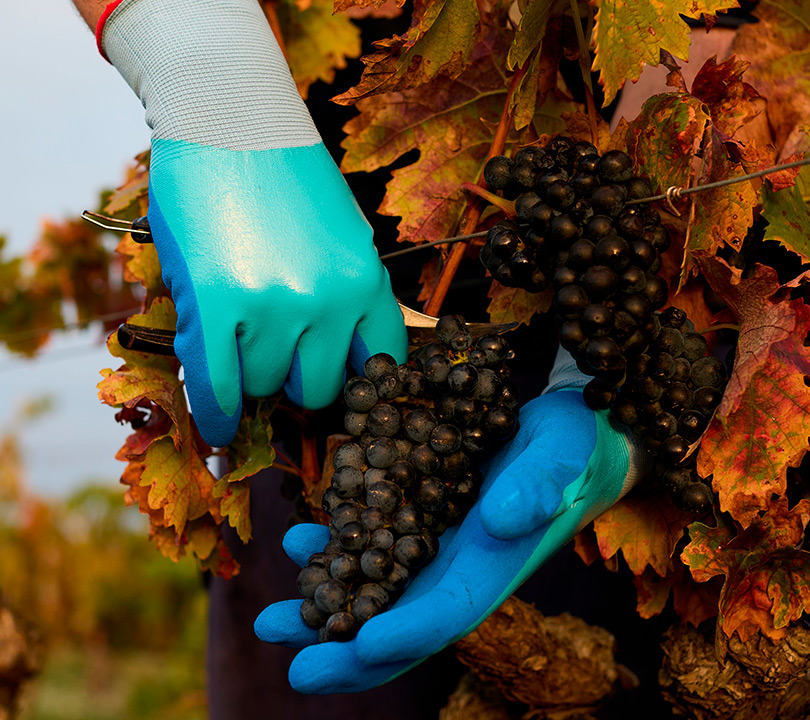
Storage, sorting and separation of raw materials
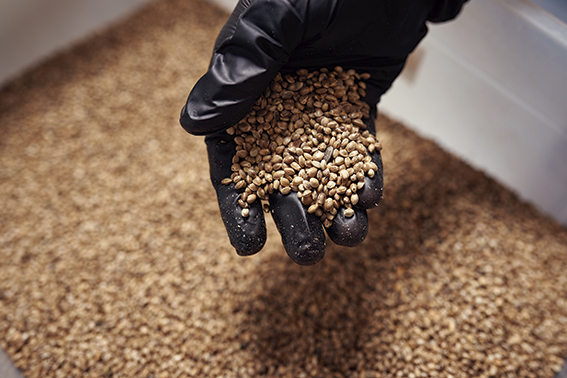
Depending on the raw material, this phase may involve mixing, washing, cutting or simple storage, with the aim of better conditioning it for subsequent stages. The current trend in storage is to minimise manual handling through mechanisation, thanks to automation, which can involve self-propelled transport, conveyor belts (for cereals and fruit), bucket lifts (for cereals and fish), spiral conveyors (for confectionery and flour), air ducts (for unloading cereals, sugar or nuts and transporting flour).
Raw materials are generally stored in silos, warehouses, cellars or cold rooms, depending on their nature (liquid or solid).
This phase can also include the selection of the raw material, according to the manufacturer's criteria and expectations for the final product. In some cases, the criterion of mixing and homogenisation is used or, in other cases, parameters such as the size, weight or colour of the raw material may be used. The user will therefore need sensitivity and dexterity, as well as impermeability to liquids and fats or, in the case of frozen products, protection against the cold.

Gloves by phases
Washing
Cleaning and preparation
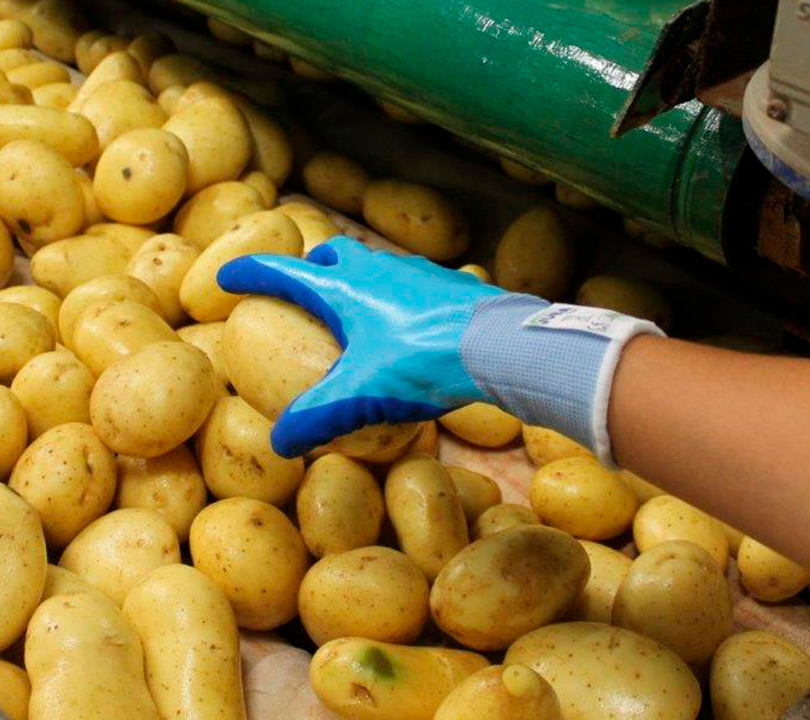
The selected raw material is then cleaned, cut and substances are added to improve the quality of the final product and prepare it for the next stages of production. Gloves must focus on cut protection, sensitivity, dexterity or waterproofing.

Gloves by phases
Extraction and initial processing
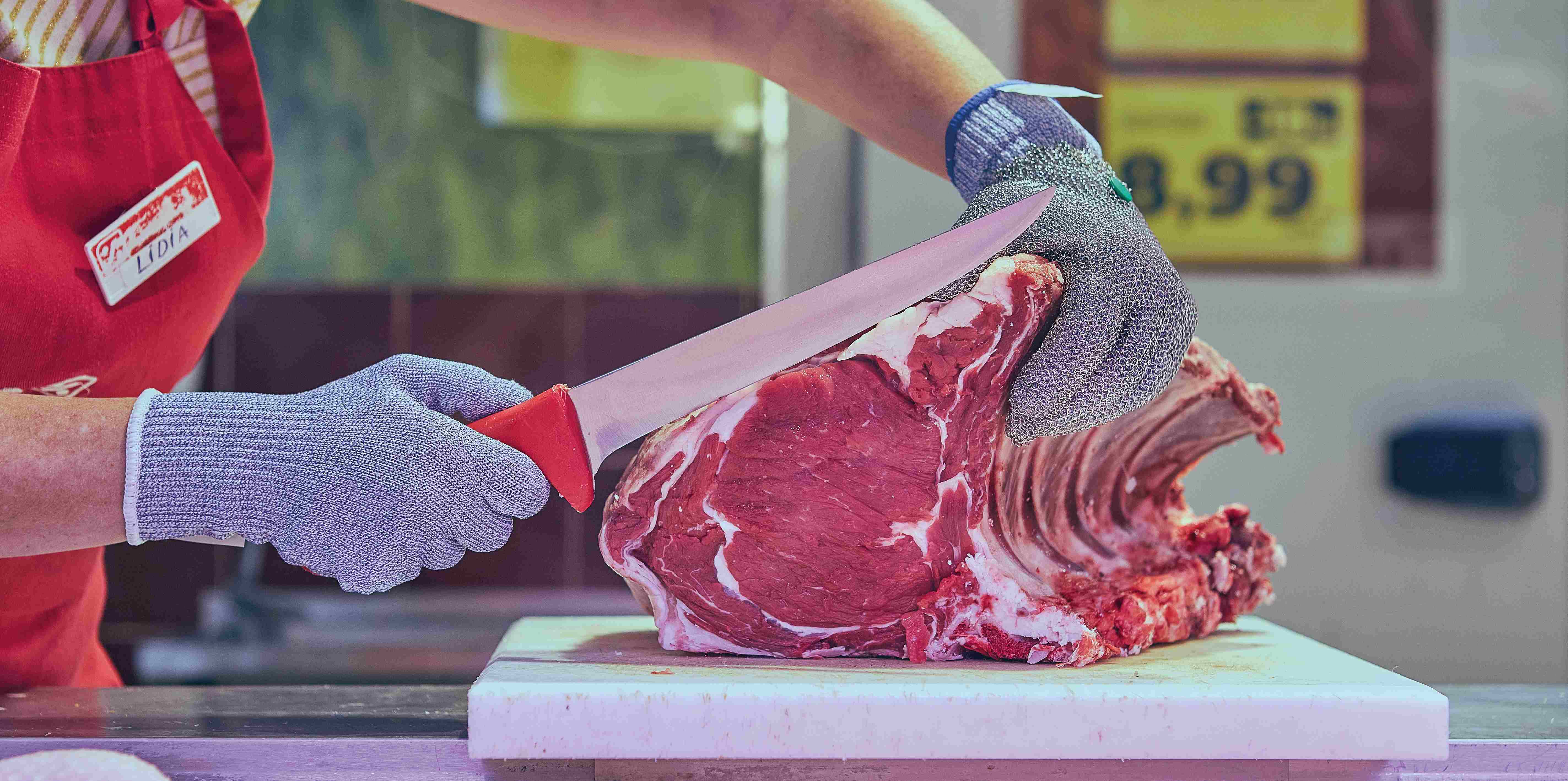
Food processing involves a certain complexity, although each industry has its own way of preparing or extracting each raw material. This includes processing dairy products, plucking, peeling and boning, handling fruit and vegetables or, for example, ready meals. A new product can also be extracted from raw materials by various methods: crushing, grinding, pulverising, heat, solvents, drying and filtration.
Liquid products are separated by centrifugation or filtration through filter presses in breweries and in the production of oils and fats. Mixing, moulding and filling are also carried out. The main risks for the professional are cuts and punctures, high and low temperatures, and gripping in environments containing water, grease, bacteria and blood. It may also be necessary to protect against cuts, chemicals and temperatures.

Gloves by phases
Mesh gloves
Preservation and packaging
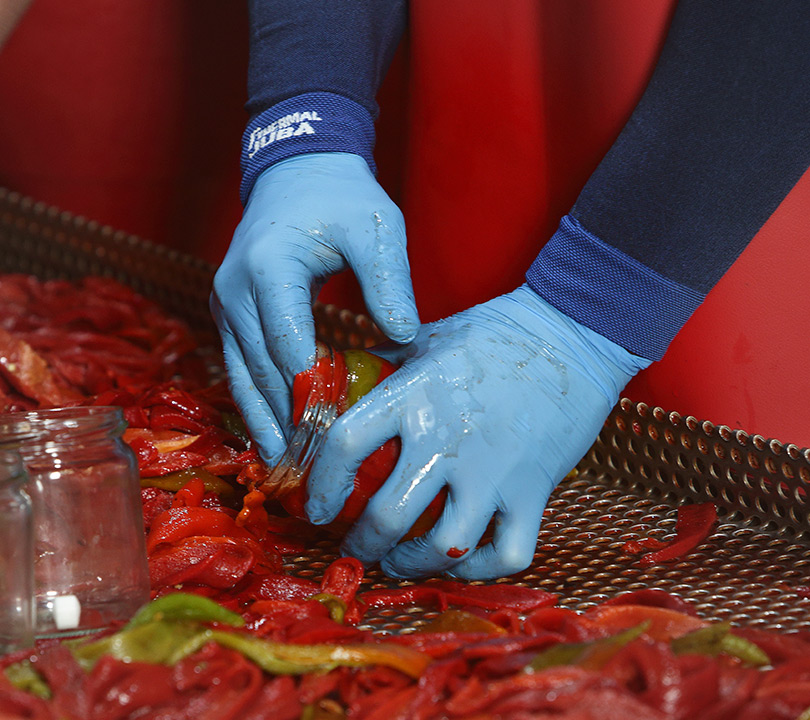
The processed product must be preserved and packaged in such a way as to remain intact until it reaches the end consumer. Food can be preserved by sterilisation, dehydration, refrigeration or drying.
The packaging industry is one of the world's most dynamic industries. It serves most industrial sectors as a key element in the marketing chain. Types of work include packaging (aseptic and frozen), bottling, canning and filling. There is also the storage of finished products, for which there are warehouse and cold store workers.
In this field, professionals must have resistance to heat or cold (thermal protection), impermeability, prehension, dexterity and touch.

Gloves by phases
Storage, distribution and logistics
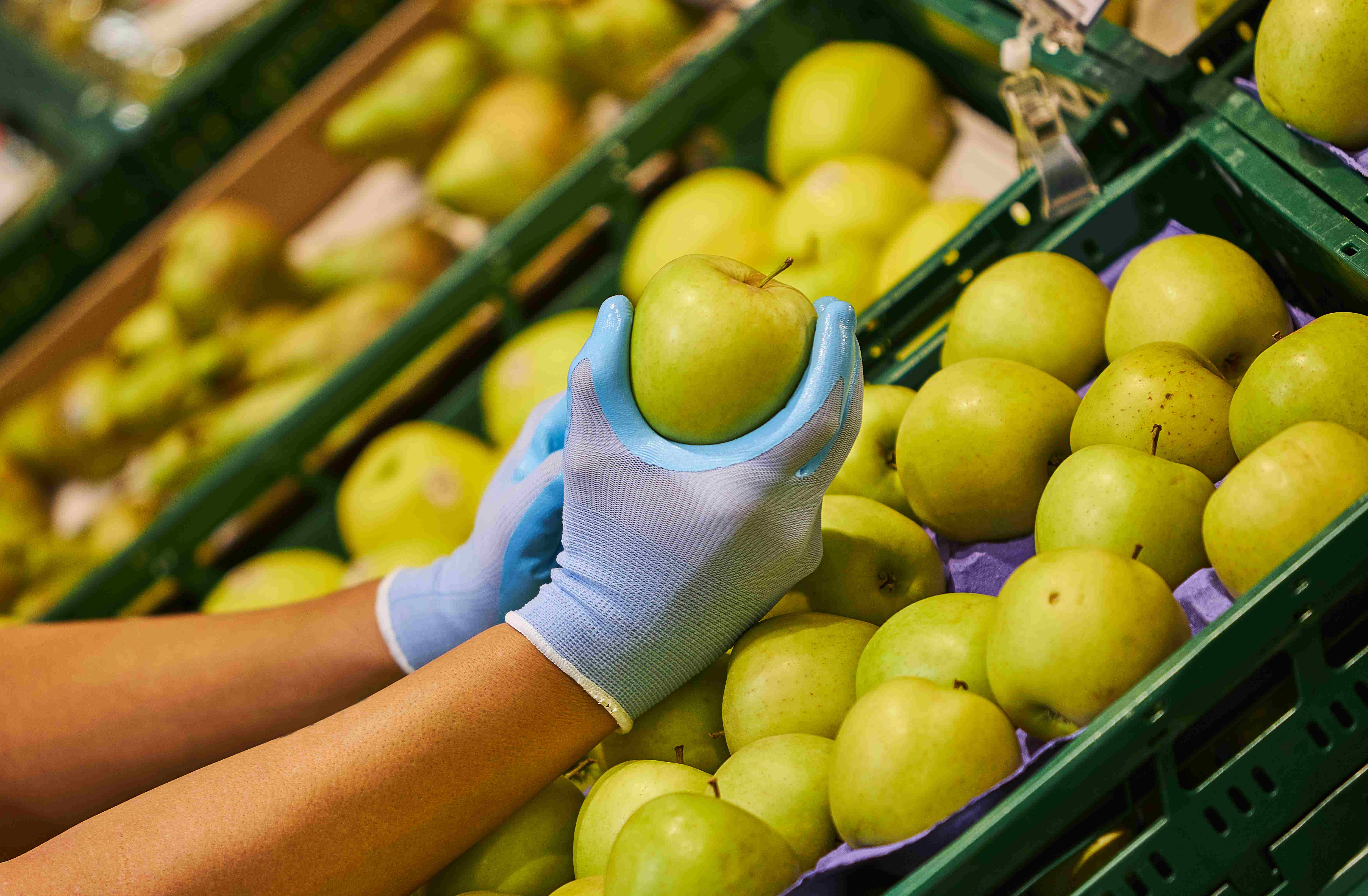
The process ends with storage, after quality control, for distribution. The main tasks are collecting, storing, transporting and supplying packaging.
The risks are the cold, mainly when working outdoors. Professionals require a good grip, sensitivity, touch, abrasion and dexterity.

Gloves by phases
Hygiene and maintenance

In this sector, it is necessary to keep the workspace and machinery clean, sterilised and disinfected.
Specific activities in this food sub-sector include disinfecting/sanitising, maintaining/repairing equipment, cleaning with detergents, industrial mechanics, inspecting, sanitising and disinfecting installations, and sharpening blades on machines.
For these tasks, the user will need gloves that are resistant to heat or cold (thermal protection), waterproof, protect against cuts and offer a good grip and feel. And, of course, without losing dexterity in handling.

Gloves by phases
